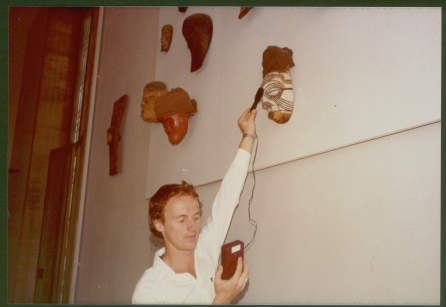This image shows an ICCROM course participant using a light meter to measure light intensity on a mask displayed at the "Luigi Pigorini" National Museum of Prehistory and Ethnography in Rome. The photo was taken in 1975 during the ICCROM International Course on Security, Climate Control, and Lighting in Museums (SEC Course).
Throughout the 1960s and 1970s, ICCROM established four key international training programmes at its headquarters in Rome: Architectural Conservation (ARC) in 1965, Conservation of Mural Paintings (MPC) in 1968, Fundamental Principles of Conservation—later known as Scientific Principles of Conservation (SPC)—in 1973, and Security, Climate Control, and Lighting in Museums (SEC) in 1975.
The SEC course, later renamed the Course on Preventive Conservation in Museums, was led by Gaël de Guichen and designed to equip museum professionals—administrators, curators, architects, and conservator-restorers—with essential knowledge and skills to safeguard collections. The course covered crucial topics such as climate control, lighting, theft prevention, and fire safety. Practical sessions on climate and lighting were held at the Pigorini Museum. At the same time, fire safety training, including using fire extinguishers and hose lines to extinguish small fires, was conducted under the supervision of firefighters at ICCROM's courtyard. Lectures on theft and robbery prevention were delivered by the Carabinieri.
In parallel, ICCROM expanded its reach by organizing national and regional seminars in over 40 countries, spreading awareness about preventive conservation. Additionally, ICCROM created an exhibition on climate and lighting that toured 48 European cities and developed educational materials on heritage threats and prevention strategies.
Documentation on the Course on Security, Climate Control, and Lighting in Museums and other ICCROM Programmes on Preventive Conservation is available in ICCROM Archives.

